Imagine sitting in front of a fireplace, ready for the warmth of a crackling fire to envelop you like a cozy blanket. But as you reach for the matches, you realize you’re out of fire starters.
Don’t fret, because with just a few household items and a little creativity, you can easily make your own homemade fire starters. Whether you opt for the classic dryer lint and cardboard toilet paper roll combo or try your hand at waxed pine cones or petroleum jelly-soaked cotton balls, there’s a fire starter option for everyone.
So, let’s dive into the world of DIY fire starters and discover how these simple yet effective tools can ignite the flames of your fireplace.
DIY Fire Starter Options…
- Dryer lint and cotton balls can be repurposed into cost-effective and easy-to-make fire starters.
- Waxed pine cones provide a steady flame due to their high fat content and wax coating.
- Egg carton fire starters are efficient and easy to use, utilizing combustible materials and wax.
- Duct tape is a versatile and durable material that can be used to bind combustible materials together for fire starters.
Dryer Lint Fire Starter

To easily and inexpensively start a fire in your fireplace, consider making a DIY fire starter using dryer lint and a cardboard toilet paper roll.
Dryer lint is a readily available material that can be repurposed into an effective fire starter.
Simply set aside the lint from your dryer trap and stuff it into the cardboard roll. For best results, use two or three lint-stuffed rolls.
When making the fire starter, it’s important to ensure that the lint isn’t packed too tightly. This allows for proper air circulation, which is essential for igniting the fire. The lint acts as a highly flammable material that catches fire easily, while the cardboard roll provides structure and stability.
This DIY fire starter isn’t only easy to make, but also cost-effective.
It utilizes materials that you likely already have at home. By repurposing dryer lint and a cardboard toilet paper roll, you can save money on store-bought fire starters.
To enhance the effectiveness of your DIY fire starter, you can also consider adding additional materials such as cotton balls soaked in wax or paper strips. These can provide a longer burn time and help sustain the fire (see below).
Waxed Pine Cone Fire Starters
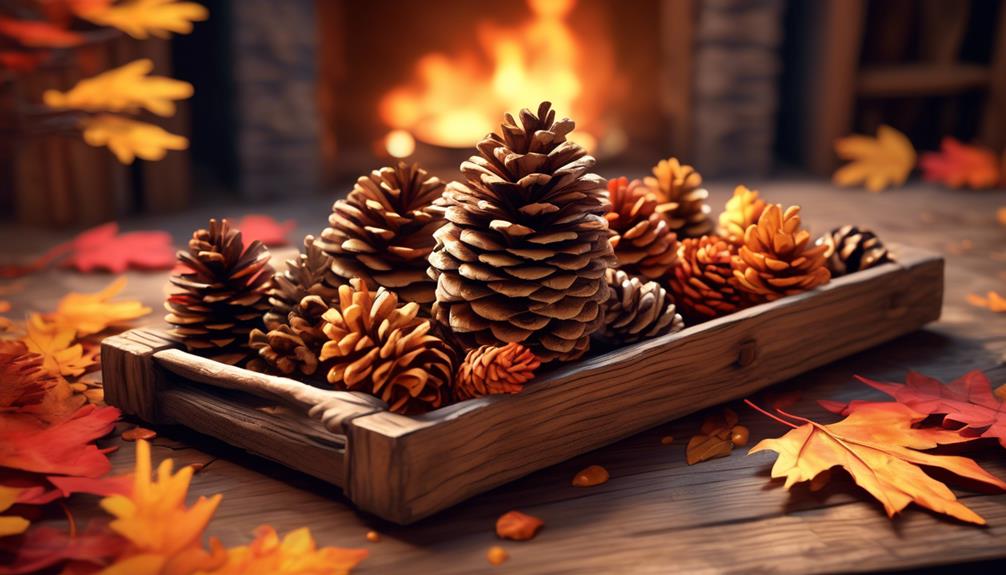
Let’s explore another effective option for starting a fire in your fireplace: waxed pine cone fire starters.
Waxed pine cone fire starters are easy to make and can provide a steady flame to get your fire going. To make these fire starters, you’ll need pine cones, melted wax (such as beeswax), and some optional supplies like wax paper, Epsom salt, essential oil, and crayons.
To start, gather some pine cones from your backyard or a nearby park. Make sure they’re dry and free from any debris. Melt the wax in a double boiler over low heat. Once the wax is melted, carefully dip each pine cone into the wax, allowing any excess wax to drip off.
Place the coated pine cones on wax paper to cool.
If you want to add a touch of color or scent to your fire starters, you can mix in some crayons or essential oils into the melted wax before dipping the pine cones. Additionally, you can sprinkle some Epsom salt or dried herbs onto the pine cones for extra fragrance.
After the pine cones have cooled and the wax has hardened, you can store them in an airtight container until you’re ready to use them.
When you’re ready to start a fire, simply place a waxed pine cone in the fireplace, surround it with some kindling, and light it with a match or lighter.
The pine cone will burn slowly and help ignite the rest of the firewood.
Waxed pine cone fire starters are a DIY fire starter option that can effectively start a fire in your fireplace. They work well because pine cones have a high fat content, which allows them to burn for a longer period of time.
The wax coating helps the pine cone burn even more slowly and steadily. The addition of rubbing alcohol or petroleum jelly into the wax can also make these fire starters burn longer and hotter.
‘Did You Know? Pine cones contain resin, which is highly flammable and helps them to propagate their seeds during forest fires.’
Cotton Ball Fire Starters
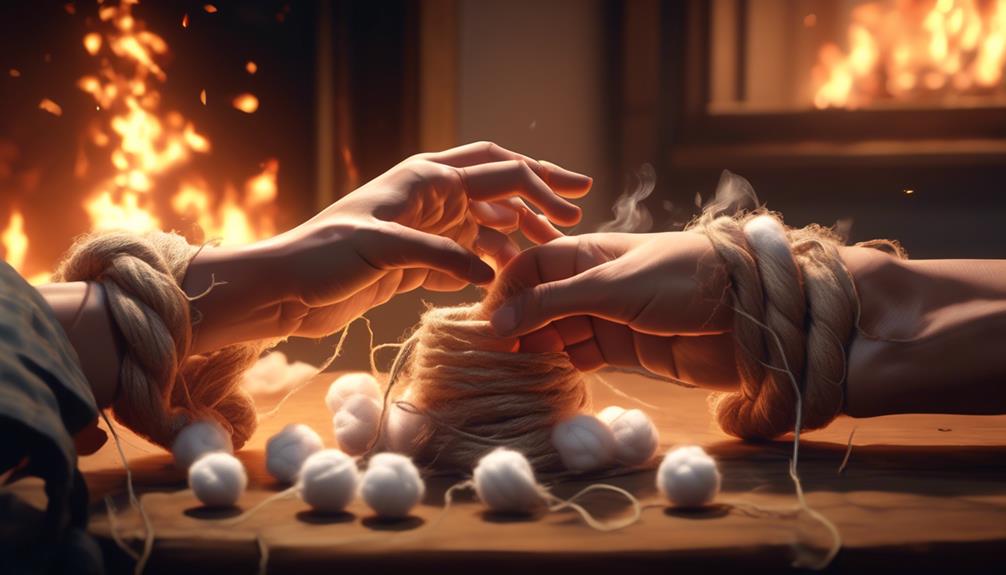
For an alternative DIY fire starter option, try making highly flammable cotton ball fire starters by soaking cotton balls in petroleum jelly.
This simple and effective method can help you get your fireplace roaring in no time.
Here’s how to make cotton ball fire starters:
- Start by gathering some cotton balls and a jar of petroleum jelly.
- Take a cotton ball and roll it in the petroleum jelly until it’s completely saturated.
- Repeat this process with as many cotton balls as you need, depending on the size of your fire.
- Store the Vaseline-covered cotton balls in a resealable plastic bag to keep them clean and dry.
When it’s time to start a fire, simply take three or four cotton balls and place them in the fireplace. Light the cotton balls with a match or lighter, and watch as they ignite quickly and easily.
The petroleum jelly acts as a fuel, providing a steady flame to help ignite the larger logs. Cotton ball fire starters aren’t only effective, but they’re also affordable and easy to make.
Give them a try and enjoy cozy nights by the fire.
‘Fun fact: Cotton ball fire starters have been used by outdoor enthusiasts and survivalists for their lightweight and compact nature, making them a popular choice for backpackers and campers.’
Egg Carton Fire Starters
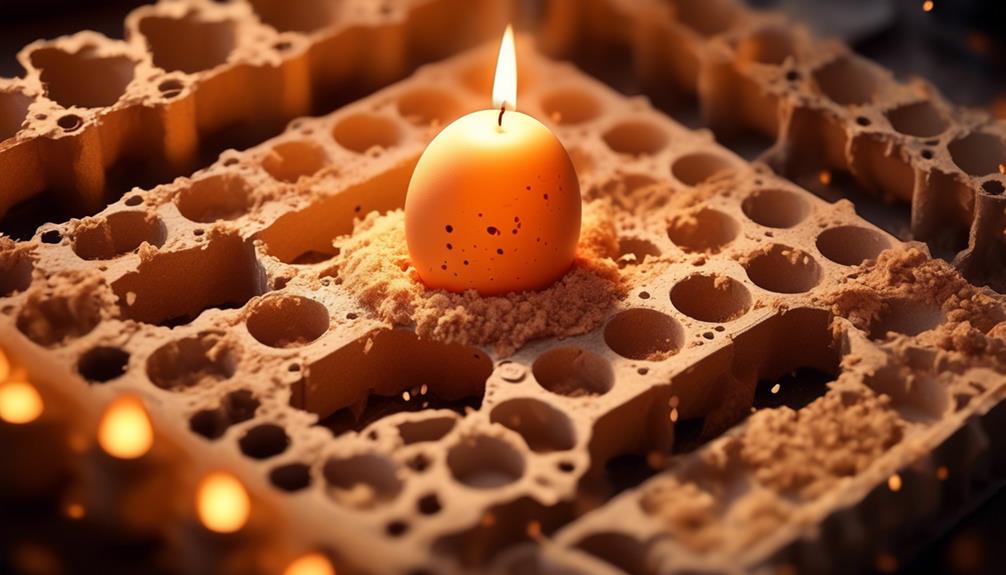
One practical and efficient method for creating fire starters is by using an empty egg carton as the base. Egg carton fire starters are a great DIY fire starter idea that can help you get your fire pit going in no time.
To make these fire starters, you’ll need an empty egg carton, some combustible materials like dryer lint, sawdust, or shredded paper, and some wax to bind everything together.
Start by filling each compartment of the egg carton with your chosen combustibles.
You can also add some extra materials like toilet paper, duct tape, or bits of an orange peel for added scent and flavor. Next, melt some candle nubs or broken crayons in a tin can placed in a pot of simmering water.
Once melted, carefully pour the wax over the combustibles in each egg compartment, making sure to distribute it evenly.
Allow the wax to cool and dry completely before breaking apart the compartments to get your fire starters. You can store them in a ziplock bag or a container until you’re ready to use them.
To give your fire starters a pleasant aroma, you can add a few drops of essential oil to the wax before pouring it over the materials.
When you’re ready to start a fire in your fire pit, simply place one or two egg carton fire starters under your logs or pinecones, light them up, and watch as your fire comes to life.
‘Did You Know? Egg carton fire starters can also be used for camping trips or outdoor cooking adventures. Their compact size and ease of use make them a popular choice among outdoor enthusiasts.’
Duct Tape Fire Starter
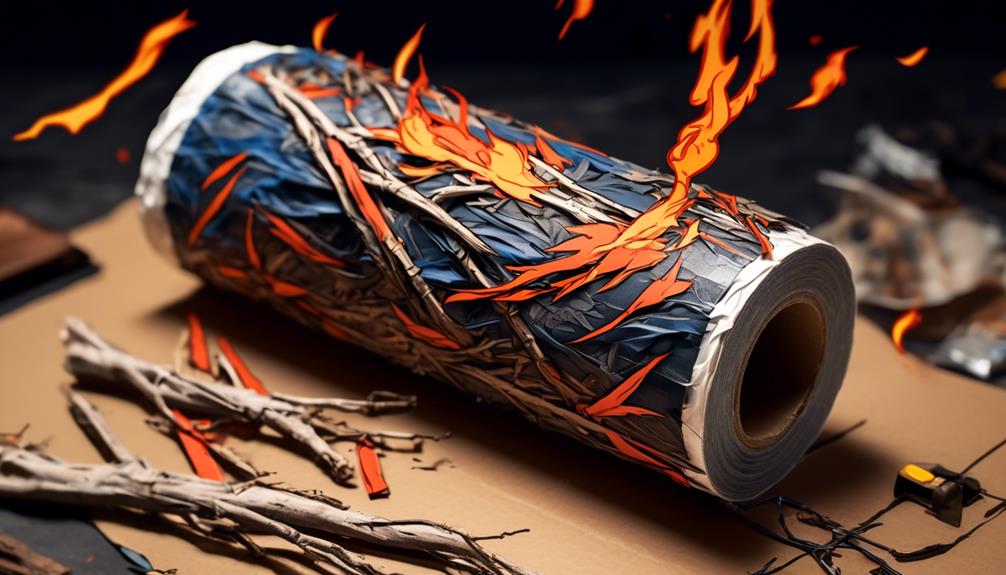
To continue expanding your repertoire of DIY fire starters, let’s explore another practical and efficient option: the duct tape fire starter. Duct tape is a versatile household item that can be used for various purposes, including starting a fire.
Here’s how you can make your own duct tape fire starter:
- Crumple the duct tape into a loose ball: Take a generous amount of duct tape and crumple it into a loose ball. The more duct tape you use, the longer your fire will burn.
- Wrap duct tape around a crumpled sheet of newspaper: For even better results, wrap the duct tape around a crumpled sheet of newspaper. This will create a larger fire starter that will burn for a longer period of time.
- Spritz the duct tape with alcohol-based hand sanitizer: To enhance the flammability of the duct tape, you can spritz it with alcohol-based hand sanitizer. This will make it easier to ignite and start your fire.
- Use caution when handling and lighting the Duct Tape Fire starter: Remember to handle the Duct Tape Fire starter with care and use caution when lighting it. Always follow proper safety precautions when starting a fire.
Next time you’re in a pinch and need to start a fire, reach for some duct tape and create your own fire starter. It’s a handy trick that has been used for decades.
‘Did you know? Duct tape was developed during World War II by Johnson & Johnson’s Permacel division for military use. Soldiers needed a strong and waterproof tape to seal ammunition cases, repair vehicles, and even patch up their gear. After the war, it became popular among civilians due to its versatility and durability. With its origins in the military, duct tape has become a staple in households around the world.
Get That Fire Roaring…
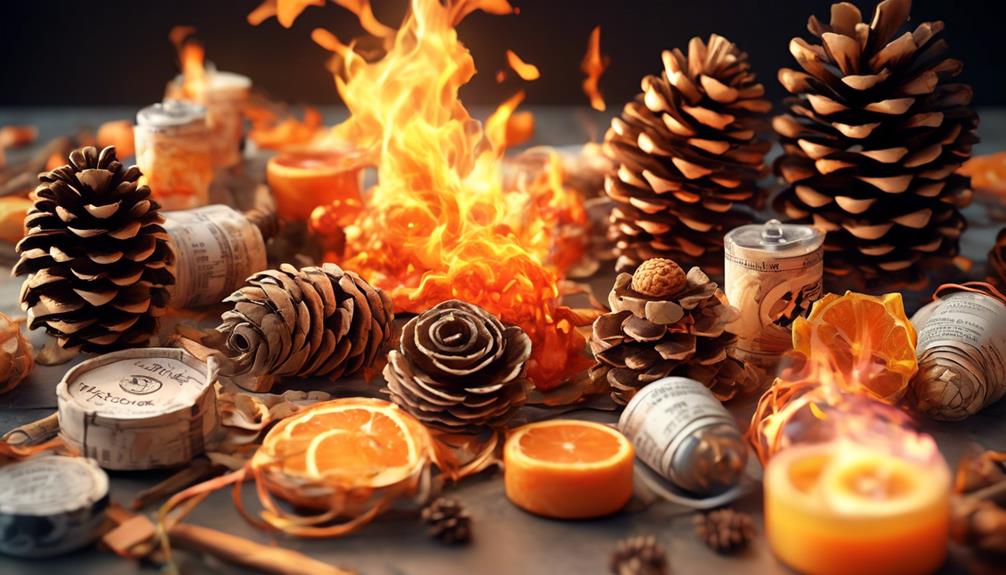
So there you have it, folks! With these homemade fire starter ideas, you’ll be the envy of all your fireplace-loving friends.
Who needs store-bought fire starters when you can get creative and make your own? From the humble dryer lint and toilet paper roll combo to the unconventional duct tape options, the possibilities are endless.
So go ahead, ignite your fire with a touch of DIY ingenuity and impress everyone with your practical and resourceful skills.
Stay warm and keep those flames burning bright!

